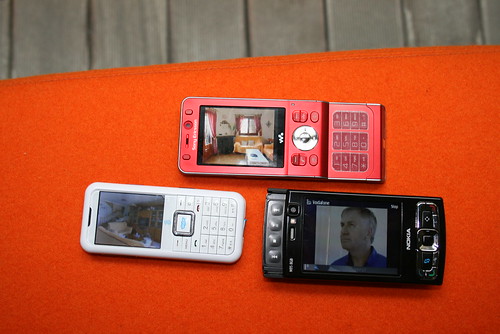I Want My MobileTV
Let’s talk about Solaris.
No, we don’t mean the Sun Microsystems operating system for Web servers (for which there is now OpenSolaris anyhow), nor the solar-powered roadway studs that go by the same name.
We’re talking about Solaris Mobile, the joint venture between ASTRA and Eutelsat — competitors in providing satellite TV in Europe who are now partners in launching an S-band based service.

TerreStar, it turns out, is after the same spectrum:
Following the Oct 6 announcement that the Solaris Mobile SES Astra/Eutelsat joint-venture is seeking to win access to the 2GHz S-Band for DVB-H transmission over Europe comes news that TerreStar Europe is also bidding for the same capacity.
TerreStar Europe is a subsidiary of TerreStar Networks, a Virginia-based business (and NASDAQ registered) that is seeking to operate integrated satellite and terrestrial telecoms systems. The business was originally called Motient, and it is a direct successor to American Mobile Satellite Ventures. A couple of weeks ago TerreStar sold off its stake in rival SkyTerra for $123m. TerreStar already has a nationwide roaming agreement with AT&T throughout the USA, for example.
Here’s the pitch for Solaris (opens in PDF). It’s similar to satellite radio in the U.S., such as the now- combined Sirius XM, which offers Backseat TV — one of a half-dozen ways of getting mobile TV in the U.S.
Solaris Mobile will use Eutelsat’s W2A satellite, scheduled for early 2009, and a very large spacecraft:
Based on the Alcatel Alenia Space Spacebus 4000C4 platform, W2A’s missions also comprise up to 46 transponders in Ku-band and a C-band payload of 10 transponders. Designed with a lifetime of more than 15 years, W2A has a maximum launch mass of 5.7 tonnes and will deliver 11 kW of payload power.
Eutelsat has also just announced they will have two spacecraft as Arianespace’s payload at the end of November — one of many launches over the next three months worldwide.
(Check out our previous posts on Mobile TV here, here and here.)